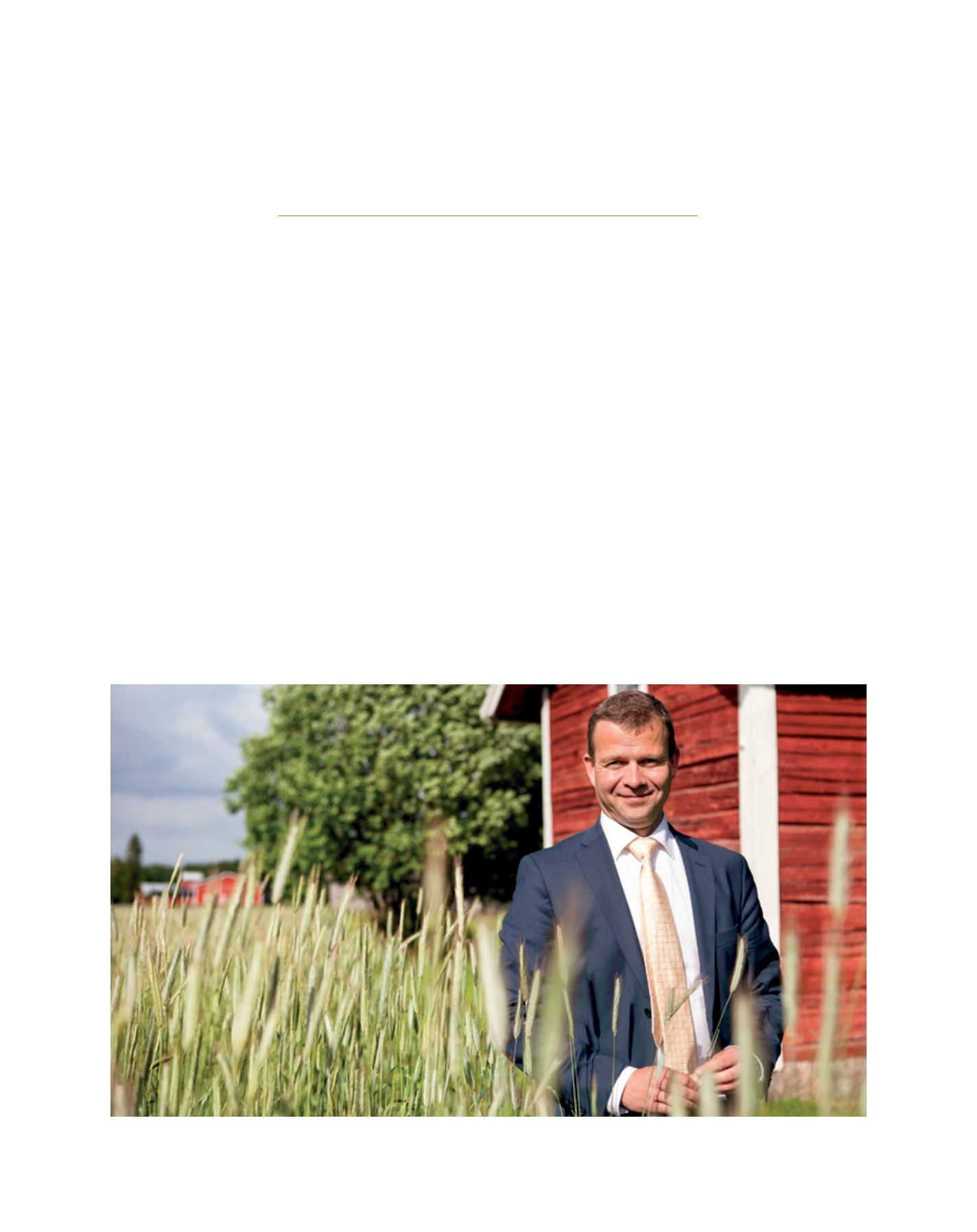

[
] 210
Versatility as strength
in Finnish family farming
Petteri Orpo, Minister of Agriculture and Forestry, Finland;
with Nilla Möller, Annukka Lyra and Kati Leppälahti
F
amily farming has brought many opportunities and
benefits to Finland’s society. The base of Finnish
farming lies on small and mid-sized farms that are
often family owned. Finland has a unique geographical
profile with arctic climate conditions, vast forests and
numerous lakes that characterize and define the farming
models. Due to that, and for historical reasons, Finnish
family farming is a source of innovations in combining
sources of livelihood – such as tourism, bioeconomy and
forestry – with family farming. Family farming in Finland
boosts local economies by being versatile and innovative.
Finland is an arctic country and the most northern agricultural
country in the world. The population is around 5.5 million and
it is the eighth largest country in Europe with an area of 338,424
square kilometres. The growing season is short; in southern
Finland it lasts 160-190 days, and in the north 110-150 days.
The temperatures vary a great deal through the year, and the
highest and lowest temperatures range from +30 to -30 degrees
Celsius. Cold temperatures and night frost in both early and
late summer shorten the growing season. In northern Finland
the summer has a period of nightless nights, when the sun does
not set at all. However, the plants cannot take full advantage of
the warmth accumulated over the long day. Adverse climate is
a serious handicap for animal husbandry as well. Because of the
arctic conditions with the long, cold winter, the building costs
of livestock buildings and warehouses are high. Additional
costs are created by the short pasture season, heating and insu-
lation, and storage of feed during winter. Cold conditions also
have some advantages for agriculture, as many plant diseases
and pests don’t survive over the winter.
On the European scale the country’s average yields of
arable farming are very low. Almost a quarter of Finland’s
area is covered by water and 86 per cent of the land area is
Image: Marianna Laitinen
Petteri Orpo, Minister of Agriculture and Forestry: “Family farming in Finland boosts local economies by being versatile and innovative”
D
eep
R
oots
















